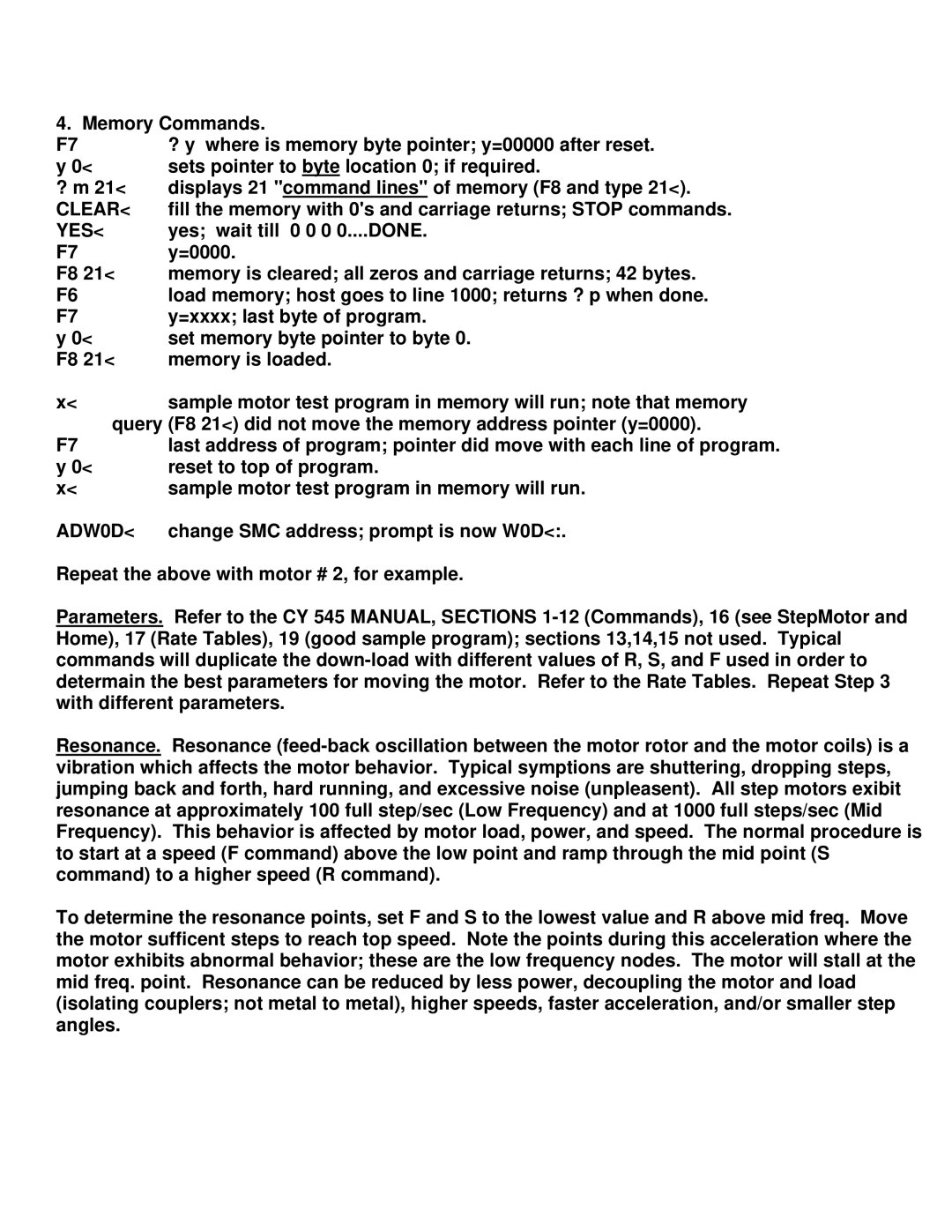4. Memory Commands.
F7 | ? y where is memory byte pointer; y=00000 after reset. |
y 0< | sets pointer to byte location 0; if required. |
? m 21< | displays 21 "command lines" of memory (F8 and type 21<). |
CLEAR< | fill the memory with 0's and carriage returns; STOP commands. |
YES< | yes; wait till 0 0 0 0....DONE. |
F7 | y=0000. |
F8 21< | memory is cleared; all zeros and carriage returns; 42 bytes. |
F6 | load memory; host goes to line 1000; returns ? p when done. |
F7 | y=xxxx; last byte of program. |
y 0< | set memory byte pointer to byte 0. |
F8 21< | memory is loaded. |
x< | sample motor test program in memory will run; note that memory |
query (F8 21<) did not move the memory address pointer (y=0000). | |
F7 | last address of program; pointer did move with each line of program. |
y 0< | reset to top of program. |
x< | sample motor test program in memory will run. |
ADW0D< | change SMC address; prompt is now W0D<:. |
Repeat the above with motor # 2, for example.
Parameters. Refer to the CY 545 MANUAL, SECTIONS
Resonance. Resonance
To determine the resonance points, set F and S to the lowest value and R above mid freq. Move the motor sufficent steps to reach top speed. Note the points during this acceleration where the motor exhibits abnormal behavior; these are the low frequency nodes. The motor will stall at the mid freq. point. Resonance can be reduced by less power, decoupling the motor and load (isolating couplers; not metal to metal), higher speeds, faster acceleration, and/or smaller step angles.
